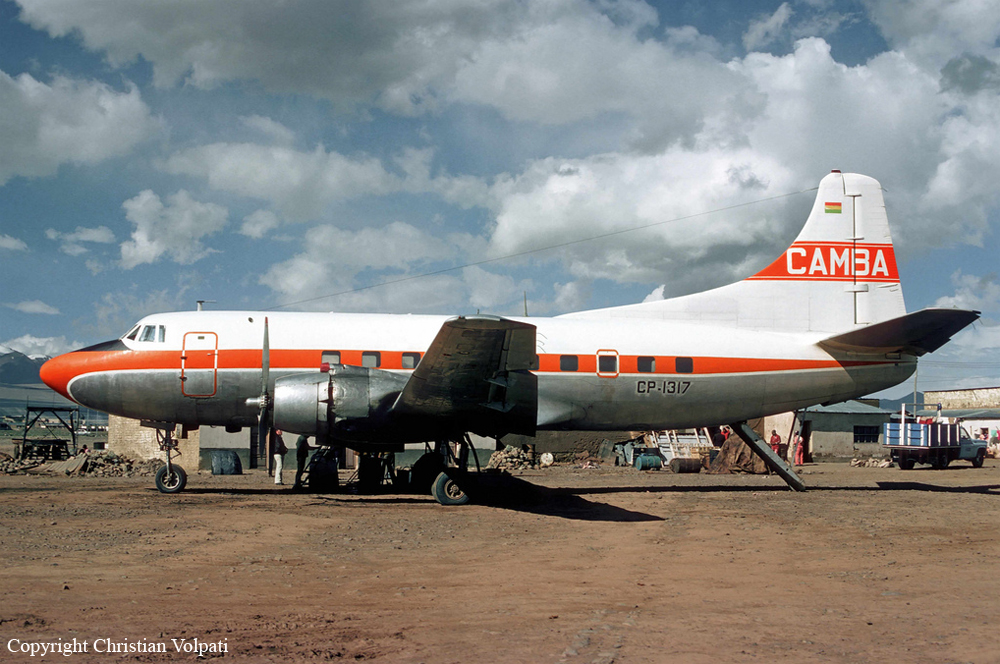Country
Crash of a Martin 404 in Paraparau
Date & Time:
Jun 16, 1987
Registration:
CP-1570
Survivors:
Yes
MSN:
14167
YOM:
1952
Crew on board:
3
Crew fatalities:
Pax on board:
0
Pax fatalities:
Other fatalities:
Total fatalities:
0
Circumstances:
On final approach to Paraparau Airport, an engine failed and caught fire. Also, the crew was unable to lower the gear. The aircraft belly landed and slid for few dozen meters before coming to rest. All three crew members escaped uninjured and the aircraft was damaged beyond repair.
Probable cause:
Engine failure and fire on approach for unknown reasons.
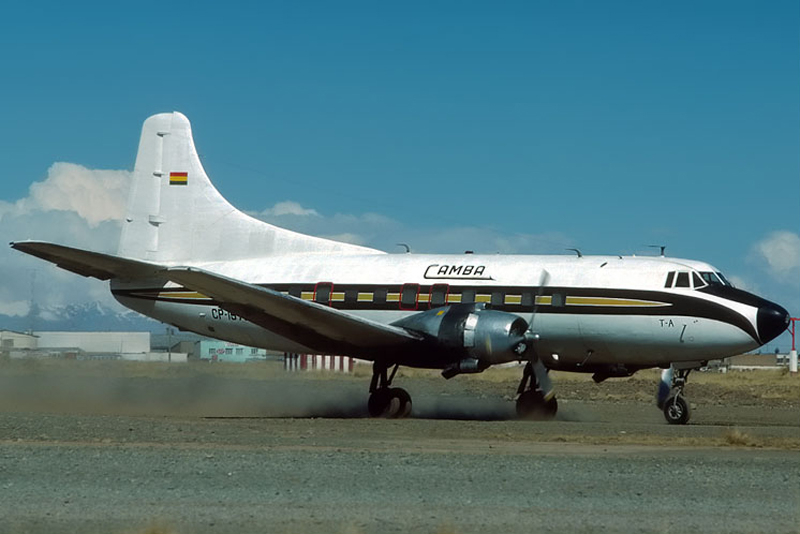
Crash of a Martin 404 in Buffalo: 3 killed
Date & Time:
Jun 27, 1986 at 0545 LT
Registration:
N40443
Survivors:
No
Schedule:
Buffalo - Buffalo
MSN:
14228
YOM:
1952
Crew on board:
2
Crew fatalities:
Pax on board:
1
Pax fatalities:
Other fatalities:
Total fatalities:
3
Circumstances:
N40443 was contracted by the Wyoming Department of Agriculture to spray grasshoppers. Investigation revealed the pilot held a private certificate with asmel ratings. His medical certificate was denied because he failed to provide information concerning high blood pressure and alcoholism. Copilot held a commercial certificate with asel rating. No evidence was found to indicate that either pilot had any operating experience in the Martin 404 aircraft. Former employees of operator stated that N40443 was not well maintained. The ADI system and interior lights were inoperative. Weight of aircraft at the time of accident was calculated to be 44,492 pounds. The max gross total weight for a 'dry' takeoff from a 4,500 foot runway was approximately 37,900 pounds. The flight manual performance charts indicate that a runway length of over 5,500 feet would be needed for an aircraft at 44,492 pounds. The aircraft collided with a dirt bank during takeoff. All three occupants were killed.
Probable cause:
Occurrence #1: loss of control - in flight
Phase of operation: takeoff
Findings
1. (f) fluid, adi fluid - inoperative
2. (f) preflight planning/preparation - poor - pilot in command
3. (f) lack of total experience in kind of aircraft - pilot in command
4. (c) inadeq certification/approval, operation/operator - company/operator mgmt
5. (c) aircraft performance, takeoff capability - exceeded
6. (c) aircraft weight and balance - exceeded - pilot in command
7. (f) lack of recent experience in type of aircraft - pilot in command
8. (f) lack of total experience - copilot/second pilot
9. (c) airspeed (vlof) - not attained - pilot in command
10. (c) proper climb rate - not possible - pilot in command
11. (c) remedial action - not possible - pilot in command
----------
Occurrence #2: in flight collision with terrain/water
Phase of operation: descent - uncontrolled
Findings
12. Terrain condition - dirt bank/rising embankment
Phase of operation: takeoff
Findings
1. (f) fluid, adi fluid - inoperative
2. (f) preflight planning/preparation - poor - pilot in command
3. (f) lack of total experience in kind of aircraft - pilot in command
4. (c) inadeq certification/approval, operation/operator - company/operator mgmt
5. (c) aircraft performance, takeoff capability - exceeded
6. (c) aircraft weight and balance - exceeded - pilot in command
7. (f) lack of recent experience in type of aircraft - pilot in command
8. (f) lack of total experience - copilot/second pilot
9. (c) airspeed (vlof) - not attained - pilot in command
10. (c) proper climb rate - not possible - pilot in command
11. (c) remedial action - not possible - pilot in command
----------
Occurrence #2: in flight collision with terrain/water
Phase of operation: descent - uncontrolled
Findings
12. Terrain condition - dirt bank/rising embankment
Final Report:
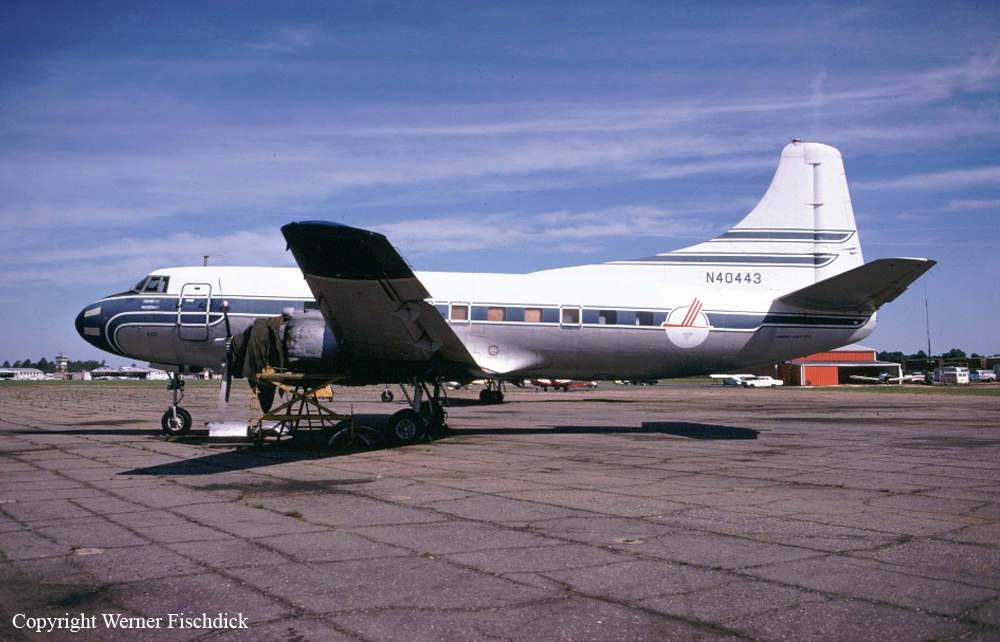
Crash of a Martin 404 in La Paz
Date & Time:
Aug 19, 1985
Registration:
CP-1704
Survivors:
Yes
MSN:
14172
YOM:
1952
Crew on board:
3
Crew fatalities:
Pax on board:
0
Pax fatalities:
Other fatalities:
Total fatalities:
0
Circumstances:
Crashed while taking off from La Paz-El Alto Airport after an engine failed at rotation. The aircraft was destroyed and all three crew members were injured.
Probable cause:
Engine failure for unknown reasons.
Crash of a Martin 404 in Madera
Date & Time:
May 15, 1982 at 1320 LT
Registration:
N40445
Survivors:
Yes
Schedule:
Madera - Casper
MSN:
14230
YOM:
1952
Crew on board:
2
Crew fatalities:
Pax on board:
0
Pax fatalities:
Other fatalities:
Total fatalities:
0
Aircraft flight hours:
43000
Circumstances:
After takeoff the aircraft was observed to trail a brown substance. About 3 miles from the airport the right engine oil pressure dropped. The pilot decided to return to the airport. When he thought the runway was attainable he lowered the flaps; however, a loss of power in the left engine occurred and a landing was made in a wheat field. Investigation revealed failure of the front master rod bearing in the right engine. The aircraft had not been flown for five years prior to this flight and evidence of oil starvation was apparent in both engines. Both pilots escaped with minor injuries.
Probable cause:
Occurrence #1: loss of engine power
Phase of operation: takeoff - initial climb
Findings
1. (c) lubricating system,oil line - cracked
2. (c) maintenance - improper - other person
3. (c) fluid,oil - starvation
4. (c) engine assembly,master rod - failure,total
----------
Occurrence #2: forced landing
Phase of operation: maneuvering - turn to landing area (emergency)
Findings
5. (c) emergency procedure - not followed - pilot in command
6. (f) lack of familiarity with aircraft - pilot in command
----------
Occurrence #3: on ground/water collision with object
Phase of operation: landing - roll
Findings
7. (f) terrain condition - crop
8. (f) object - fence
Phase of operation: takeoff - initial climb
Findings
1. (c) lubricating system,oil line - cracked
2. (c) maintenance - improper - other person
3. (c) fluid,oil - starvation
4. (c) engine assembly,master rod - failure,total
----------
Occurrence #2: forced landing
Phase of operation: maneuvering - turn to landing area (emergency)
Findings
5. (c) emergency procedure - not followed - pilot in command
6. (f) lack of familiarity with aircraft - pilot in command
----------
Occurrence #3: on ground/water collision with object
Phase of operation: landing - roll
Findings
7. (f) terrain condition - crop
8. (f) object - fence
Final Report:
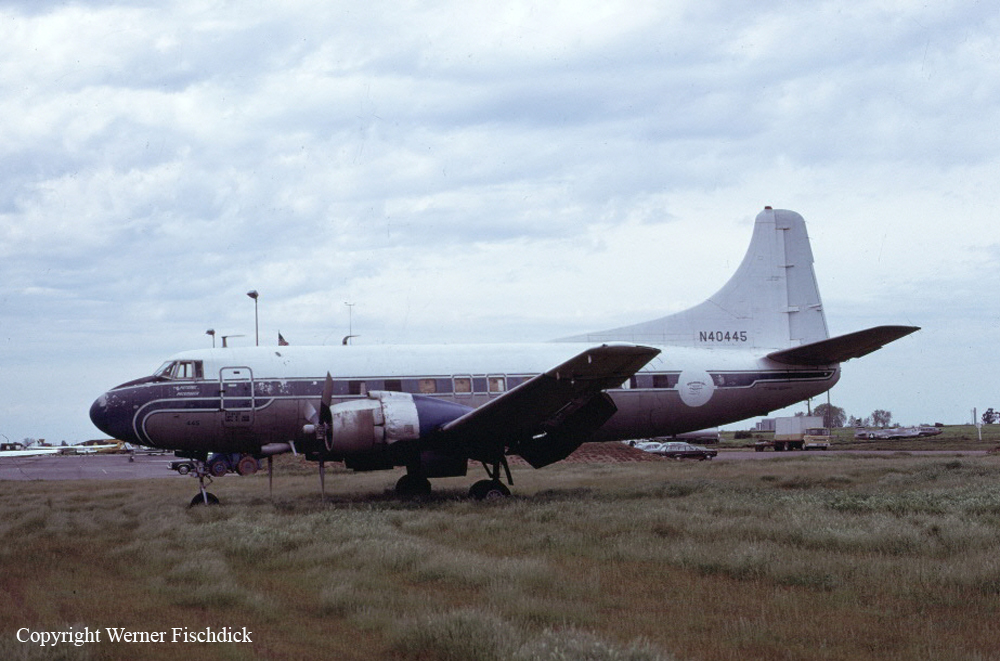
Crash of a Martin 404 in Apolo: 10 killed
Date & Time:
Dec 12, 1979
Registration:
CP-1440
Survivors:
Yes
MSN:
14114
YOM:
1951
Crew on board:
3
Crew fatalities:
Pax on board:
8
Pax fatalities:
Other fatalities:
Total fatalities:
10
Circumstances:
After takeoff from Apolo Airport, while climbing, the airplane stalled and crashed in flames in an open field. A passenger was seriously injured while 10 other occupants were killed.
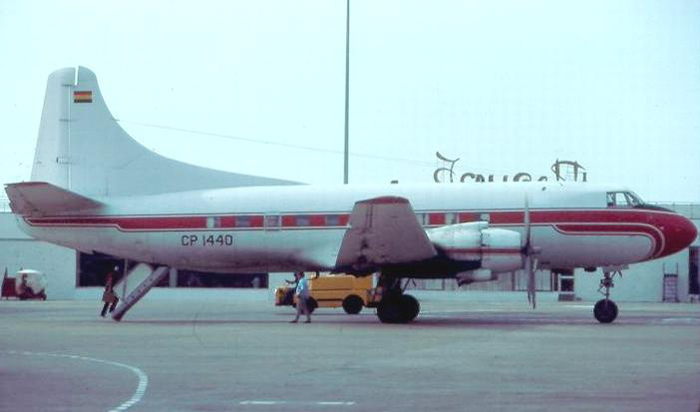
Crash of a Martin 404 in Grand Canyon
Date & Time:
Nov 16, 1979 at 1452 LT
Registration:
N40438
Survivors:
Yes
Schedule:
Grand Canyon - Las Vegas
MSN:
14173
YOM:
1952
Flight number:
KS2504
Crew on board:
3
Crew fatalities:
Pax on board:
41
Pax fatalities:
Other fatalities:
Total fatalities:
0
Captain / Total hours on type:
1500.00
Copilot / Total hours on type:
100
Aircraft flight hours:
30451
Circumstances:
On November 16, 1979, Nevada Airlines, Inc., Flight 2504, a Martin 404 (N40438), was a chartered flight from Las Vegas, Nevada, to Grand Canyon National Park Airport, Tusayan, Arizona, and return. About 0935 / Flight 2504 departed Las Vegas to carry a French tour group to the Grand Canyon for a sightseeing tour. There were 41 passengers and a crew of 3 aboard for the roundtrip. The crew and passengers reported that the trip from Las Vegas to Tusayan was routine. After a scenic flight over the Grand Canyon, a landing was made at Tusayan after about 1 hr 10 min of flight time. No fuel, oil, or antidetonate (ADI) fluid was taken on, and no baggage was placed aboard at Tusayan. Takeoff for the return flight was started at 1450 from runway 3. The copilot was to make the takeoff from the right seat. The weather was clear, visibility unlimited, and winds were from 040° at 15 kns. The crew stated that all pretakeoff checklist items were completed and that the takeoff roll was normal. The captain said that he checked the engine instruments at V speed, takeoff safety speed, as the aircraft was rotated for takeoff and "everything was normal." He said he raised the landing gear and, almost immediately thereafter, sensed a loss of power from the left engine. He said he took control of the aircraft from the copilot and noticed that the left engine autofeather light was illuminated and the feather button depressed. About 1451:20, the tower local controller stated, '...do you want to come back?" The captain-said he told the copilot to advise the tower that the flight had lost an engine and was returning to the airport. At 1451:50, the copilot told the tower, '... we're (sic) lost an engine and we want to come back around." The local controller cleared the aircraft as requested. There was no reply from Flight 2504. The captain stated that he noticed a 200-fpm rate of climb when the aircraft reached the departure end of the runway. He said that after passing the runway the aircraft encountered a downdraft and turbulence which overcame the single engine climb performance of the aircraft. He said that, as the engine failure emergency checklist was being accomplished, he made a slight left turn to avoid a radio tower along the flightpath. The copilot stated that the aircraft passed to the left of and below the top of the tower; the top of the tower is 6,739 feet, about 100 feet above the ground. Even though she was aware of an engine problem, the flight attendant stated that she was not aware that an engine had failed. She said she was not warned by the cockpit crew about the impending crash. The passengers recalled hearing no unusual noises during the takeoff; however, several of them saw the left propeller stop shortly after the aircraft left the ground. Several passengers stated that, once the aircraft was airborne and after the left engine had failed, they experienced a "rocking" movement of the aircraft. One passenger, a pilot who was seated at the front of the cabin, said he was aware that the left propeller had been feathered and that, immediately thereafter, the aircraft began to descend. None of the passengers interviewed, were aware that the aircraft was going to crash until they heard the noise of a tree strike. They said there was no warning given by the crew. Several witnesses on the ground stated that they saw the aircraft flying low with the left propeller stationary. Some reported that the landing gear was up. No witnesses reported smoke, fire, or any other problems with the aircraft before impact. The airport tower personnel stated that they saw the left propeller stop when the aircraft was abeam of their position in the tower and slightly below the top of the tower. The tower is located about 6,000 ft from the beginning of Flight 2504's takeoff roll. Tower personnel stated that the aircraft never climbed over 100 ft above the ground level. They said the aircraft banked slightly to the left and descended into the trees. They activated the crash notification circuit when they realized an accident was inevitable. The captain stated that he "was making it except for the downdrafts," and he noticed that the airspeed had decreased to 105 knots; V2 was about 101,5 knots. He said that when he saw that the temperature of the right engine cylinder head was rising rapidly toward the maximum limit, he reduced the manifold pressure about 2 inHg to avoid engine failure. However, he said the inability of the aircraft to climb and the proximity of the terrain required that he return the right engine to full power and select a forced-landing area. The captain stated that, since terrain surrounding the airport was heavily wooded, he headed for the clear area north of the field. He said that when he realized that he would not clear two tall trees before reaching the clear area, he lowered the nose slightly and "flew through the trees." The cockpit struck one of the trees, shattering the captain's windshield. The captain said the aircraft lost about 20 kns of airspeed when it struck the trees and the aircraft began to roll to the left; minimum control speed with the left engine inoperative was about 91 kns. He further reduced the power on the right engine, rolled the wings level, and rotated the aircraft so that it would strike the ground in a nose-high altitude. Both pilots said they hit the ground three times, with each impact becoming progressively more severe. The aircraft came to rest about 850 ft beyond the point where the first trees were struck. The crashpath was oriented on a heading of 355°, and the fuselage came to rest on a heading of 070°. A fire broke out on the right side of the aircraft as it slid to a stop. The fire originated near the cockpit, which had twisted to the left about 120°. Three crew members and seven passengers were seriously injured while 34 other occupants escaped with minor injuries. The aircraft was written off.
Probable cause:
The unwanted autofeather of the left propeller just after take-off and an encounter with turbulence and downdrafts, a combination which exceeded the aircraft's single-engine climb capability which had been degraded by the high density altitude and a turn to avoid an obstacle in the flight path. Also, the available climb margin was reduced by the rising terrain along the flight path. The cause(s) for the unwanted autofeather of the left propeller could not be determined.
Final Report:
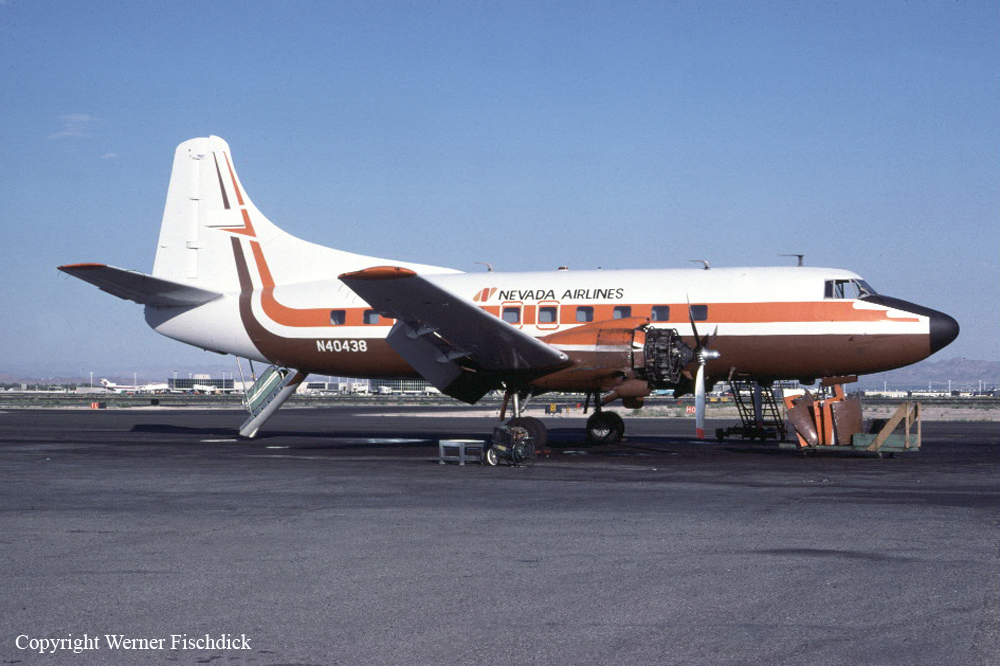
Crash of a Martin 404 in Miami
Date & Time:
Jun 29, 1979 at 0800 LT
Registration:
N40408
Survivors:
Yes
Schedule:
Pampa - Pampa
MSN:
14108
YOM:
1951
Crew on board:
2
Crew fatalities:
Pax on board:
0
Pax fatalities:
Other fatalities:
Total fatalities:
0
Captain / Total hours on type:
61.00
Circumstances:
The crew departed in the early morning the airport of Pampa-Perry Lefors Field to spray grasshoppers on pasture land in the region of Miami, north Texas. While flying at low height in restricted vision, the airplane struck a dirt bank and crashed. Both pilots were seriously injured and the aircraft was destroyed.
Probable cause:
Collision with dirt bank during swath run after the pilot misjudged altitude and clearance. The following contributing factors were reported:
- Windshield dirty, restriction vision,
- Sunglare,
- Goggles not used,
- Spray from another aircraft collected on windshield according to the pilot.
- Windshield dirty, restriction vision,
- Sunglare,
- Goggles not used,
- Spray from another aircraft collected on windshield according to the pilot.
Final Report:
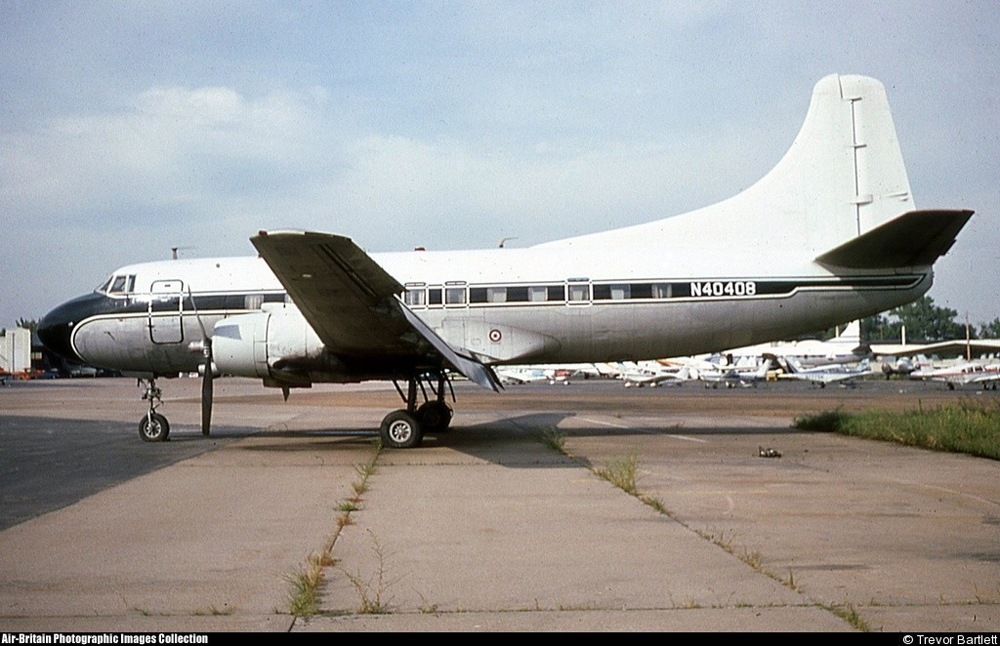
Crash of a Martin VC-3A off Punto Fijo
Date & Time:
Nov 18, 1978 at 1215 LT
Registration:
N13415
Survivors:
Yes
MSN:
14290
YOM:
1952
Crew on board:
2
Crew fatalities:
Pax on board:
1
Pax fatalities:
Other fatalities:
Total fatalities:
0
Circumstances:
While cruising over the Gulf of Venezuela, the crew informed ATC about an engine failure and ditched the aircraft few km off the coast of Punto Fijo. All three occupants were rescued while the aircraft sank and was lost.
Probable cause:
Engine failure or malfunction. As the aircraft was not recovered, the exact cause of the accident could not be determined.
Final Report:
Crash of a Martin 404 in Bolivia
Date & Time:
Jan 20, 1977
Registration:
CP-1317
Survivors:
Yes
MSN:
14163
YOM:
1952
Crew on board:
4
Crew fatalities:
Pax on board:
2
Pax fatalities:
Other fatalities:
Total fatalities:
0
Circumstances:
On final approach, the captain sighted cattle on the first portion of the runway and decided to extend the flare and landed further down the runway. After touchdown on a wet surface, the left main gear struck an irregularity in the terrain. Upon impact, it collapsed and the airplane veered off runway to the left and came to rest. All six occupants escaped uninjured while the aircraft was damaged beyond repair.
